Discover the Music of the (Garden) Spheres
There are those among us who feel that truly meaningful gardening involves more than the habitual Saturday-morning run to the farmer's market to buy one of whatever each plant vendor is touting that weekend. Andrea Cochran and Topher Delaney, two California landscape architects, embody the philosophy of designing with meaning and purpose.
In their designs you will find nary a Stella de Oro daylily or carpet rose. What you will find is more of a feeling, an experience, one that thoughtfully and purposefully uses shapes, textures, hardscape materials, light and, yes, plants, to achieve a specific and lasting effect.
Does all of this sound too lofty to achieve, too elusive to find on next weekend's home improvement TV lineup? Perhaps you love your Stellas too much to ever consider parting with them. Never fear. Through the thoughtful introduction of specific shapes into your garden, you can begin to add that new and meaningful dimension you want but didn't previously know how to achieve.
Let's start with the sphere.
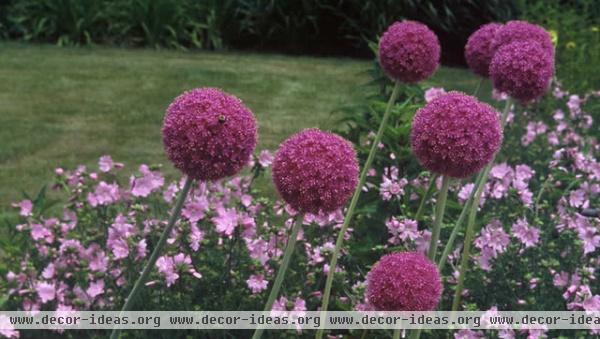
Spheres in Nature
Notice how these alliums (Allium spp and cvs, zones 3 to 9) are a focal point, standing out with structural elegance as stars of the garden border.
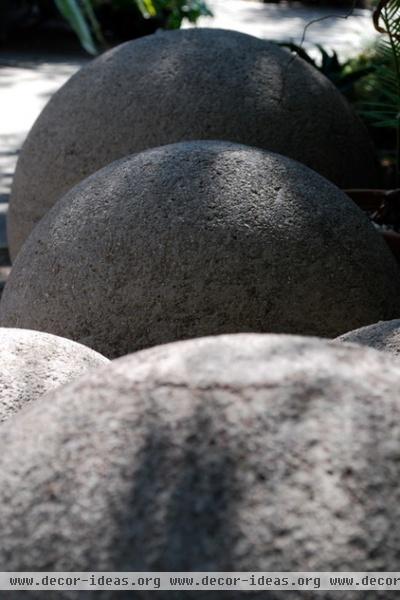
The sphere, along with its two-dimensional counterpart, the circle, is the world's most basic shape. It symbolizes completeness, with no beginning or end. No point on the sphere is nearer or farther from the center, suggesting equality and acceptance. Its curves are graceful and feminine. Within it there is safety and protection.
The sphere is an archetypal form representing stars, planets and, ultimately, the universe. It has primal meaning, spanning cultures and the ages. Therefore, introducing this shape into your garden will most certainly add a layer of meaning.
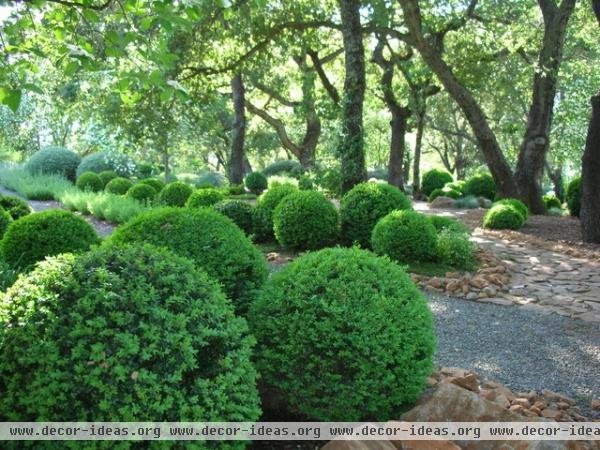
European gardeners have been inviting the sphere into their traditional garden spaces for several hundred years. Notice how the ordinary boxwood (Buxus cvs, zones 5 to 9) takes on new meaning and purpose when pruned into a sphere.
If you're not a boxwood fan, consider the Japanese false cypress 'Curly Tops' (Chamaecyparis pisifera 'Curly Tops', zones 4 to 8), 'Mr. Bowling Ball' arborvitae (Thuja occidentalis 'Bobozam', zones 3 to 8), the dwarf globe blue spruce (Picea pungens 'Globosa', zones 2 to 8) or the 'Dragon Prince' Japanese cedar (Cryptomeria japonica 'Dragon Prince', zones 5 to 9).
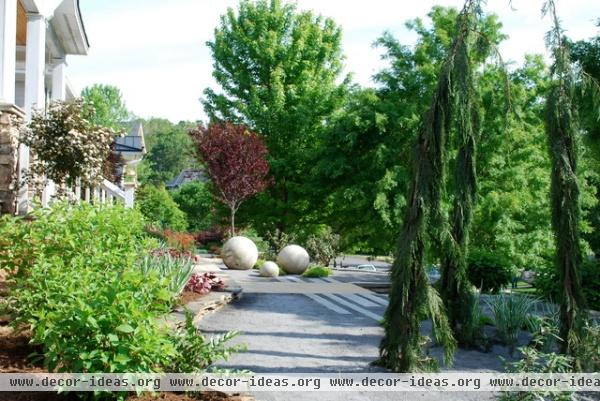
Spheres as Garden Accessories
In this thought-provoking, contemporary front yard, three granite spheres sit atop a carpet of crushed granite. Bluestone planks pull the eye across the sidewalk, focusing the eye on the spheres.
Groups of three are pleasing to the eye because they are less rigid and formal than a matching pair. Aristotle wrote about groups of three, stating that items grouped this way are more memorable. In this garden the three spheres are balanced by a sculptural triptych of Alaskan cedars (Chamaecyparis nootkatensis, zones 5 to 8).
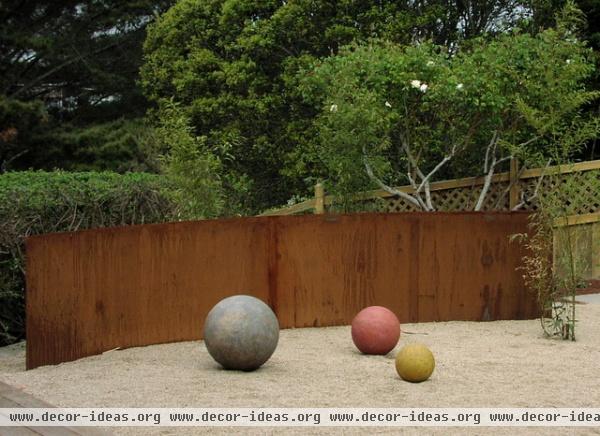
The air of profound simplicity in this space is undeniable. In this part of the garden, plants would hinder the powerful feeling it elicits. Notice two things: how the colors of the spheres complement the Cor-Ten steel wall and, more important, the impact of the negative space left by the spheres atop the gravel floor.
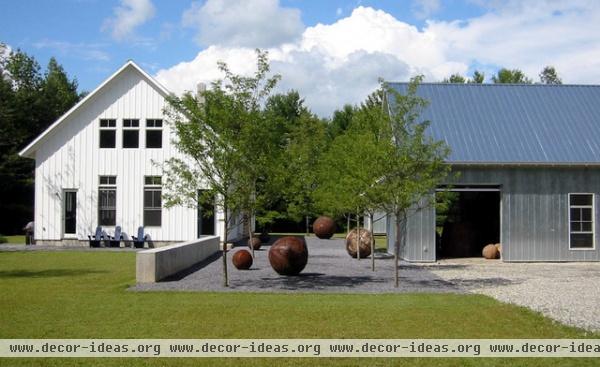
In this "American Gothic"–esque landscape, the appropriate use of spheres adds dimension. Notice how the more prominent spheres in the center courtyard engage the eye so that the less-noticeable spheres in the doorway become an important part of the overall composition. They otherwise might have gone unnoticed.
In a contemporary garden, spheres are viewed as most profound when placed in an area uncluttered by a plethora of foliage. For maximum impact, simpler is better.
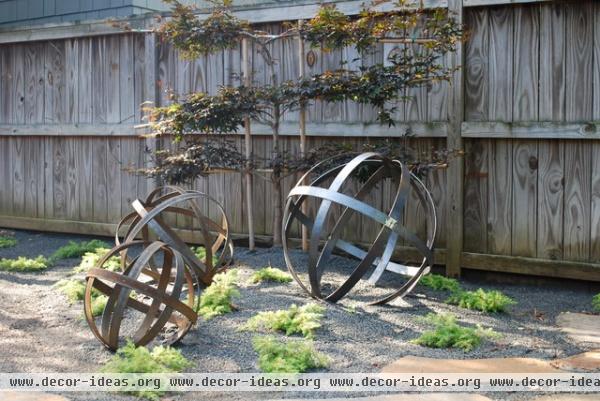
Spheres shed their contemporary vibe and take on the illusion of updated farm equipment here. Note how the rusted steel complements the crushed granite garden floor, the orange-toned flagstone and the espaliered Bloodgood Japanese maple (Acer palmatum var. atopurpureum 'Bloodgood', zones 5 to 8) in this updated farmhouse courtyard garden.
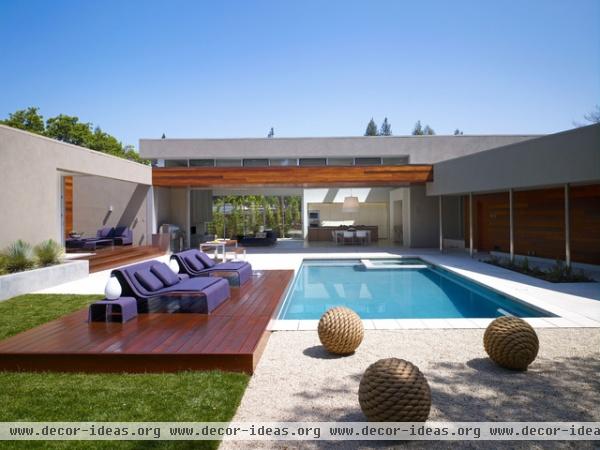
Notice how this group of three spheres adds context and a third dimension to this landscape. The spherical shapes complement the shape of the chairs as well as the wooden beam in the background. All of this makes for a very intriguing and inviting space.
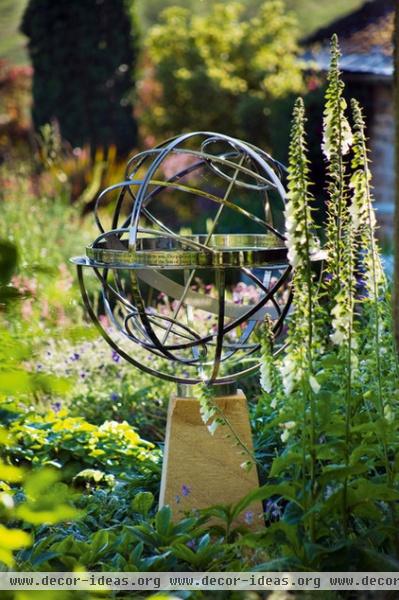
Armillary sundials are a splendid way of bringing spheres into both traditional and contemporary gardens. Their simple beauty and link to the past add instant interest and a focal point that pulls the garden up to another level.
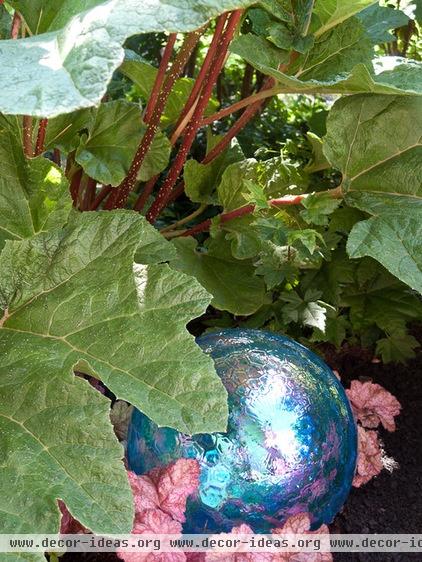
Gazing balls and other spheres are frequently available at garden shops as accessories. This piece adds a bit of childlike mystery to the garden. Don't you feel as though you've stumbled upon a treasure that you want to keep all to yourself?
No matter how you use spheres in your garden, they are guaranteed to create a positive feeling, from the philosophical to the whimsical.












